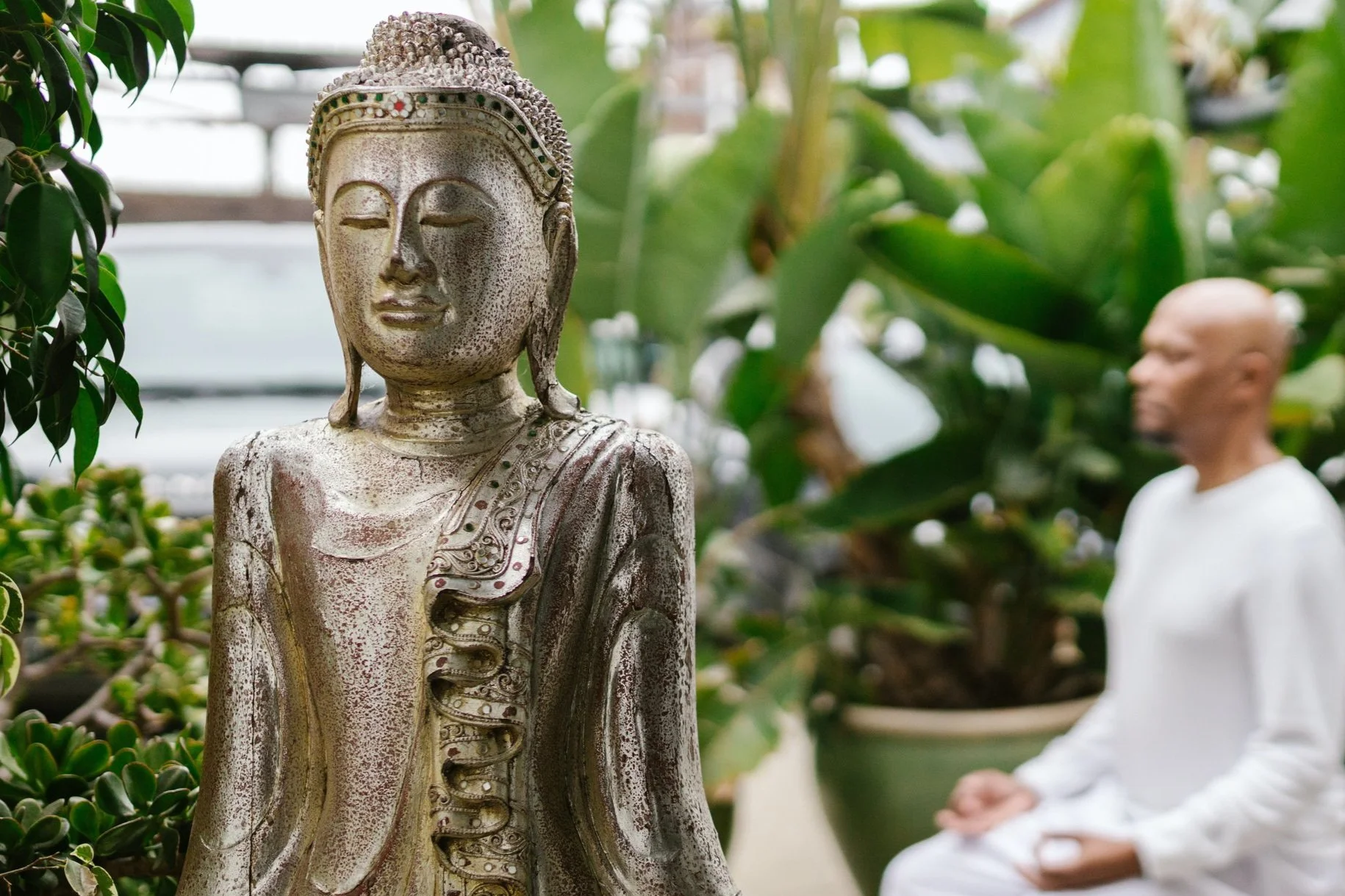As yoga students, how important is it to know about the philosophy of the yoga we practice?
Yoga Philosophy is a vast subject; the Vedas, the Sutras of Patanjali, the Bhagavad Gita, and the Upanishads, to name but a few. You could spend a lifetime studying any one of these great texts.
But yoga is a physical practice, so do we need to know about the philosophy of it to be fully-rounded yogis?
What is yoga?
The physical poses that we know as ‘yoga’ are actually asanas, (postures), which are just one part of eight different aspects of yoga.
The eight limbs of yoga are the yamas (moral restraints), niyamas (positive duties), asana, pranayama (control of the breath), pratyahara (withdrawal of the senses), dharana (concentration), dhyana (meditation) and samadhi (self-realisation).
These eight limbs are described in the Yoga Sutras of Patanjali, which is perhaps the most famous philosophical or theoretical work about yoga – but by no means the only one.
A brief history of Yoga Philosophy
We don’t really know when yoga began, but the estimate is around 2,500 years ago. Modern Yoga is an amalgam of lots of different Indian forms, but the earliest mention of yoga in a written form is in the Upanishads and the Mahabharata.
The Upanishads are part of the Vedas (meaning ‘wisdom’) – ancient Sanskrit texts – which are a collection of spiritual teachings, and the basis of Hinduism. The Mahabharata is an epic tale (the other one is the Ramayana), which tells of the wars between two groups of cousins, as well as lots of devotional and spiritual teachings.
Within the Mahabharata is the Bhagavad Gita, in which Krishna’s teaching is infused with yogic concepts.
Following on from these works is possibly the most important philosophy of Yoga; the Yoga Sutras of Patanjali. Written somewhere between 500 and 200 BC, it is a collection of 196 aphorisms (sayings) covering all aspects of yogic life.
In the 15th century, the sage Svatmarama wrote the Hatha Yoga Pradipika (Light on Hatha Yoga), which is much closer to a manual than the other works and is more like the yoga that we recognise and practice today.
Where to start
But where do we start? As yoga students the best place to start is the Yoga Sutras of Patanjali. As an Iyengar yoga teacher, I start all my classes with the traditional chant to Patanjali, so it would be a bit remiss of me to chant away to some sage I have no idea about.
However, if you’re expecting a handy guide on how to do yoga, you’ll be disappointed. The sutras are a series of aphorisms that focus mainly on the philosophical journey of yoga. Within the 196 verses, there are only three that actually refer to the physical postures we call yoga.
There are four sections or padas of the book.
Samadhi pada – on concentration, or contemplation
Sadhana pada – on practice
Vibhuti pada – on properties and powers
Kaivalya pada- on freedom from attachment
The first deals with where you’re heading – samadhi. It’s an aspirational way to start and is directed at those who are already well on their way to enlightenment. The second sutra in this section is the definition of yoga that might surprise most yoga students:
“Yoga is the cessation of movements in the consciousness”
So far from being a way a way to feel healthier, grow stronger, or even gain self-discipline, the primary goal of our yoga practice is to quiet the endless chatter of the brain.
The second chapter is for the less spiritually evolved (so, most of us) and covers the eight limbs of yoga, as well as the three great paths of yoga; Karma Yoga (the yoga of action), Jnana Yoga (the yoga of knowledge), and Bhakti Yoga (the yoga of devotion).
The third chapter is about the divine effects of yoga and the eight supernatural powers, or siddhis. These siddhis include the ability to change size, weight, to attain every wish and to gain power over all things – so eat your heart out, Marvel.
The final chapter is about achieving kaivalya when the sadhaka (seeker) attains liberation from the extremes of pleasure and pain and lives in a state of virtuous awareness. Easy.
Things to bear in mind
It’s not a religion. According to Patanjali, those who practice yoga can be of any faith, colour, creed, or sexual orientation (well, he didn’t say that, but I’m extrapolating). Anyone can do yoga, and their beliefs and values will be strengthened by the practice and philosophy.
Don’t be overwhelmed. Yoga philosophy was studied by sages who literally did nothing else, for their whole LIVES. For us normal folk, studying yoga philosophy is likely to be a long way down our ‘to do’ list. I return to the same chapters of my books over and over again. Sometimes, if I have 5 minutes, I just open the book at a random page and read what swims into view and just digest that one section.
Yoga philosophy can be a practice. If your body isn’t up to practice, but you’re feeling the need to quiet the mind, then practising any of the eight limbs of yoga is still yoga. Studying any of the eight limbs of yoga, is still yoga. In fact, it could be argued that it’s more yoga than actually doing yoga (according to Patanjali and his 196 aphorisms).
Take Notes. Have a notebook that you keep to hand, and then when something makes sense to you, jot it down. Or keep a handy guide of the meanings of some of the recurring words, like samadhi.

